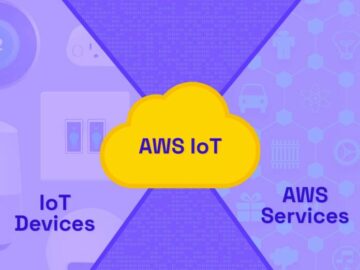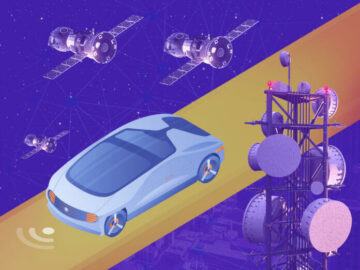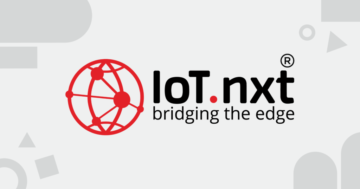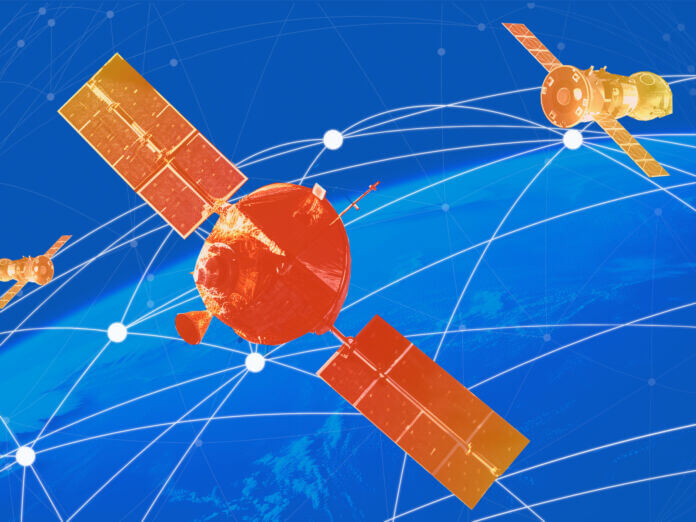
IoT has come in leaps and bounds since its initial inception. Of all the use cases gaining popularity, the ability to track assets hits the top of the list. The types of assets tracked include everything from shipping containers to shipments of vital medicines, capital-intensive machinery, and livestock.
Some of these asset classes are highly mobile, covering countries and regions of the world, many of which have no cellular or LPWAN coverage.
A recent innovation now provides wireless IoT connectivity via low earth orbit satellites. Let’s take a look at how satellite IoT (SatIoT) offers a cost-effective method of implementing global IoT connectivity.
Wireless IoT/IIoT Connectivity
The origins of the Internet of Things (IoT) are fuzzy, but many sources reference a soft drinks machine deployed at Carnegie Mellon University in the early 1980s. Kevin Ashton coined the term in late 1999 when IoT was gathering momentum.
Like many electronics-based innovations, technology development and industry adoption are iterative. Cycles of innovation and demand are familiar friends, and the rise of IoT and its industrial twin, the IIoT, has depended on these cyclical patterns.
Examples include the need for low-power operation, from batteries, a significant barrier to adoption until ultra-low-power microcontrollers became the norm. Initially, IoT devices were hardwired into Ethernet networks, but the need for resilient, low-power wireless connectivity established low-power wide area networks (LPWAN), driven by a myriad of potential mobility-based use cases.
Wireless Connectivity Options for IoT
Initially, home, office, and factory Wi-Fi installations limited IoT/IIoT wireless connectivity. However, Wi-Fi’s bandwidth capabilities are excessive compared to what most simple IoT sensors require.
Also, Wi-Fi is a particularly power-hungry wireless protocol, suiting line-powered applications or those that use a high-capacity battery. Cellular data connectivity was also initially seen as an expensive alternative.
The 3GPP cellular specifications incorporated the narrow-band IoT service in 2016, offering a low-power, low-bandwidth connection ideal for many IoT sensors. For geographically dispersed IoT deployments, the advent of sub-GHz LPWAN protocols such as LoRa provided a low-cost unlicensed spectrum alternative to cellular methods.
As the number of wireless connectivity options increased, so did the potential use cases. Although many of the initial battery-powered wireless deployments involved fixed installations such as utility metering, the ability to develop IoT devices for tracking purposes accelerated adoption.
IoT’s most popular use case is asset tracking, whether a shipping container on a vessel traveling from Asia to Europe or a lone worker on an extensive research campus. The range of asset-tracking applications is diverse, from sizeable capital-intensive machinery to individual consignments of urgent medical supplies. Agriculture is another asset tracking or monitoring use case that benefits from low-power, LPWAN-connected sensors.
Choosing Your Wireless Connectivity
When deciding which wireless connectivity to select, there are several factors engineers should review, including:
Geographical Range
What are you tracking or communicating with? How far do you need to follow or communicate with it? Is it within a few km of a central location, say a farm, or is it a shipping container that could travel globally?
Another factor for tracking applications is the accuracy of placement. Tracking a container on a truck might only require sub-3 km positioning, but a lone worker within an indoor research lab might need less than a meter of accuracy. Going across regional and country borders will require cellular roaming and potentially fallback where the primary communication method is unavailable.
Power Source
Battery-powered offers the most flexibility, but rechargeable batteries offer an extended range if there is room for solar panels or the ability to harvest ambient or directed energy sources. The device’s duty cycle will determine battery life, so a tracker that communicates once daily might suit a shipping container at sea but not be suitable for monitoring local deliveries.
Latency & Data Packet Size
How much data needs to be transferred, how frequently, and is real-time interaction required? The payload of a simple temperature and humidity sensor may be less than 10 bytes compared to vision-based sensors for an industrial control process.
As IoT use cases increase, particularly for global deployments like asset tracking or managing massive-scale geographically dispersed implementations, the need for blending multiple connectivity methods into a single device becomes more likely. Advances in satellite technologies and the lowering cost of adoption make satellite-based IoT connectivity attractive for many applications.
Satellite IoT Connectivity
Putting communication satellites into space is not a recent phenomenon, the first dating back to the early 1960s. However, the last decade has seen a dramatic rise in the number of compact, low-cost satellites launched, many no bigger than a shoe box.
CubeSats and nanoSats are the terms given to these small satellites. Colleges and universities, along with NASA and other commercial satellite launch contractors, have built and launched some of these satellites, making them extremely popular.
A 1U nanosatellite measures 10 cm x 10 cm x 10 cm and typically weighs no more than 1.3 kg. NASA’s CubeSat Launch Initiative offers low-cost access to space for educational institutions, museums, and science centers. Tens of CubeSats may be launched at a time.
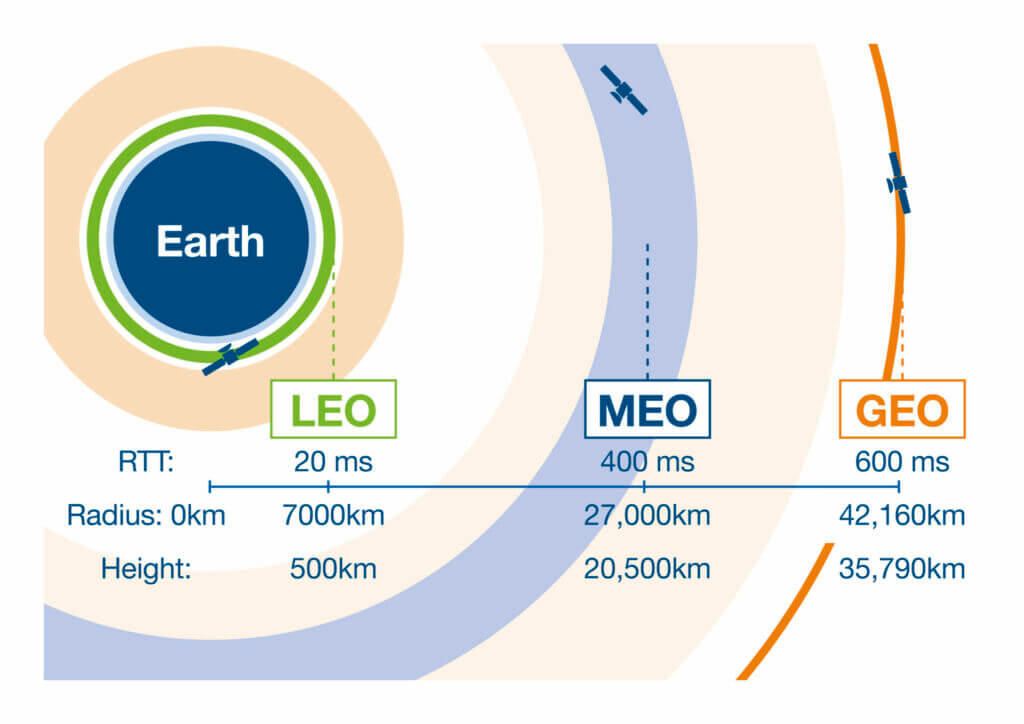
Three Orbits
A geostationary orbit allows the satellite to appear stationary from a fixed point on Earth. Note that the latency is significant because of the distance involved, up to 0.6 seconds. Television satellites such as the popular Astra 1 constellation of four satellites are in GEO and beam thousands of televisions, radio, and interactive channels towards Europe from 35,768 km about Earth. Most GNSS satellites are in a medium Earth orbit of about 22000 km.
Placing a constellation of IoT connectivity CubeSats is becoming increasingly viable for many use cases. Although each CubeSat may only be visible from an IoT device on Earth for a short duration, there will be approximately 10 – 12 passes per day, which increases with each CubeSat added to the constellation.
Also, the latency of an LEO CubeSat is significantly less than those in higher orbits and more than adequate for most non-deterministic applications.
Applications that can benefit from satellite IoT connectivity include smart agriculture, global asset tracking, and heavy machinery performance monitoring. Other use cases include deep-sea buoy data collection and maritime vessel fuel optimization.
Global IoT Use Cases
As IoT/IIoT use cases expand, the need for global low-cost, low-power connectivity becomes crucial. In the past, access to satellite communication has been restricted to government agencies and national research organizations.
Satellite IoT has the ability to open up commercial access to truly global, low-cost, and low-power connectivity. Combining SatIoT with existing wireless protocols offers a highly flexible and versatile approach to IoT connectivity.
- SEO Powered Content & PR Distribution. Get Amplified Today.
- PlatoData.Network Vertical Generative Ai. Empower Yourself. Access Here.
- PlatoAiStream. Web3 Intelligence. Knowledge Amplified. Access Here.
- PlatoESG. Carbon, CleanTech, Energy, Environment, Solar, Waste Management. Access Here.
- PlatoHealth. Biotech and Clinical Trials Intelligence. Access Here.
- Source: https://www.iotforall.com/satellite-iot-connectivity-reaches-space
- :has
- :is
- :not
- :where
- $UP
- 1
- 1.3
- 10
- 12
- 1999
- 2016
- 35%
- 6
- a
- ability
- About
- accelerated
- access
- accuracy
- across
- added
- adequate
- Adoption
- advances
- advent
- agencies
- agriculture
- All
- allows
- along
- also
- alternative
- Although
- Ambient
- an
- and
- Another
- appear
- applications
- approach
- approximately
- ARE
- AREA
- AS
- asia
- asset
- Assets
- Astra
- At
- attractive
- back
- Bandwidth
- barrier
- batteries
- battery
- Battery life
- BE
- Beam
- became
- because
- becomes
- becoming
- been
- benefit
- benefits
- bigger
- blending
- borders
- bounds
- Box
- built
- but
- by
- bytes
- Campus
- CAN
- capabilities
- Carnegie Mellon
- Carnegie mellon university
- case
- cases
- cellular
- Centers
- central
- channels
- classes
- coined
- collection
- Colleges
- Colleges and Universities
- combining
- come
- commercial
- communicate
- communicating
- Communication
- compact
- compared
- connection
- Connectivity
- Container
- Containers
- contractors
- control
- Cost
- cost-effective
- could
- countries
- country
- coverage
- covering
- crucial
- cycle
- cycles
- Cyclical
- daily
- data
- Dating
- day
- decade
- Deciding
- Deliveries
- Demand
- depended
- deployed
- deployments
- Determine
- develop
- Development
- device
- Devices
- DID
- directed
- dispersed
- distance
- diverse
- do
- dramatic
- drinks
- driven
- duration
- each
- Early
- earth
- educational
- energy
- Engineers
- established
- Ether (ETH)
- Europe
- everything
- excessive
- existing
- Expand
- expensive
- extended
- extensive
- extremely
- factor
- factors
- factory
- familiar
- far
- farm
- few
- First
- fixed
- Flexibility
- flexible
- follow
- For
- four
- frequently
- friends
- from
- Fuel
- gaining
- gathering
- geographically
- given
- Global
- Globally
- going
- Government
- government agencies
- harvest
- Have
- heavy
- High
- higher
- highly
- Hits
- Home
- How
- However
- HTTPS
- ideal
- if
- implementations
- implementing
- in
- inception
- include
- Including
- Incorporated
- Increase
- increased
- Increases
- increasingly
- indicating
- individual
- Indoor
- industrial
- industry
- initial
- initially
- Initiative
- Innovation
- innovations
- institutions
- interaction
- interactive
- Internet
- internet of things
- into
- involved
- iot
- IoT Device
- iot devices
- IoT use cases
- IT
- ITS
- jpg
- lab
- Last
- Late
- Latency
- launch
- launched
- leaps
- LEO
- less
- Life
- like
- likely
- Limited
- List
- local
- location
- Look
- Low
- low-cost
- lowering
- machine
- machinery
- make
- Making
- managing
- many
- Maritime
- max-width
- May..
- measures
- medical
- medium
- Mellon
- method
- methods
- might
- Mobile
- Momentum
- monitoring
- more
- most
- Most Popular
- much
- multiple
- Museums
- myriad
- Nasa
- National
- Need
- needs
- networks
- no
- note
- now
- number
- of
- offer
- offering
- Offers
- Office
- on
- once
- only
- open
- operation
- optimization
- Options
- or
- Orbit
- organizations
- origins
- Other
- panels
- particularly
- passes
- past
- patterns
- per
- performance
- phenomenon
- placement
- plato
- Plato Data Intelligence
- PlatoData
- Point
- Popular
- popularity
- positioning
- potential
- potentially
- primary
- process
- protocol
- protocols
- provided
- provides
- purposes
- Radio
- range
- Reaches
- real-time
- recent
- reference
- regional
- regions
- relative
- require
- required
- research
- resilient
- restricted
- review
- Rise
- Room
- round
- satellite
- satellites
- say
- Science
- SEA
- seconds
- seen
- select
- sensors
- service
- several
- Shipping
- Short
- should
- significant
- significantly
- Simple
- since
- single
- small
- So
- Soft
- solar
- solar panels
- some
- Source
- Sources
- Space
- specifications
- Spectrum
- such
- Suit
- suitable
- supplies
- Take
- Technologies
- Technology
- Technology Development
- television
- tens
- term
- terms
- than
- that
- The
- the world
- Them
- There.
- These
- things
- those
- thousands
- time
- to
- top
- towards
- track
- tracker
- Tracking
- transferred
- travel
- Traveling
- trip
- truck
- truly
- twin
- types
- typically
- unavailable
- Universities
- university
- until
- urgent
- use
- use case
- utility
- versatile
- Vessel
- via
- viable
- visible
- vital
- was
- weighs
- were
- What
- when
- whether
- which
- Wi-fi
- wide
- will
- wireless
- with
- within
- worker
- world
- X
- you
- Your
- zephyrnet

